Investigation of Microwave Absorption Performance of CoFe2O4/NiFe2O4/Carbon Fiber Composite Coated with Polypyrrole in X-Band Frequency
Abstract
1. Introduction
2. Materials and Methods
2.1. Preparation of CoFe2O4/NiFe2O4/Carbon Fiber Composite
2.2. Coating Composite Powder with Polypyrrole
2.3. Preparation of X Band Absorber Samples
2.4. Evaluation of Properties
3. Results and Discussion
3.1. Phase Identification Analysis
3.2. Field Emission Scanning Electron Microscopy (FESEM) Morphology
3.3. Magnetic Properties
3.4. Electromagnetic Parameters
3.5. Microwave Absorption Capability
4. Conclusions
Author Contributions
Funding
Conflicts of Interest
References
- Violette, N. Electromagnetic Compatibility Handbook; Springer: Berlin/Heidelberg, Germany, 2013. [Google Scholar]
- Chambers, B. Optimum design of a Salisbury Screen radar absorber. IEE Electron. Lett. 1994, 30, 1353–1354. [Google Scholar] [CrossRef]
- Kim, J.-B. Design of Salisbury screen absorbers using dielectric lossy sheets. In Proceedings of the 2011 IEEE International Conference on Microwave Technology & Computational Electromagnetics, Beijing, China, 22–25 May 2011; pp. 1–2. [Google Scholar]
- Oh, J.-H.; Oh, K.-S.; Kim, C.-G.; Hong, C.-S. Design of radar absorbing structures using glass/epoxy composite containing carbon black in X-band frequency ranges. Compos. Part B 2004, 35, 49–56. [Google Scholar] [CrossRef]
- Kim, J.-B.; Lee, S.-W.; Kim, C.-G. Comparison study on the effect of carbon nano materials for single-layer microwave absorbers in X-band. Compos. Sci. Technol. 2008, 68, 2909–2916. [Google Scholar] [CrossRef]
- Kim, B. Broadband radar absorbing structures of carbon nanocomposites. Adv. Compos. Mater. 2012, 21, 333–344. [Google Scholar] [CrossRef]
- Raj, P.M.; Mishra, D.; Sharma, H.; Swaminathan, M.; Tummala, R. Nanomagnetic Materials and Structures, and Their Applications in Integrated rf and Power Modules. 2014. Available online: https://pdfs.semanticscholar.org/e2df/edcca29324417c9ddb4ff45a040ebb962f3e.pdf (accessed on 20 August 2020).
- Qin, F.; Peng, H.X.; Pankratov, N.Y.; Phan, M.; Panina, L.V.; Ipatov, M.; Zhukova, V.; Zhukov, A.; Gonzalez, J. Exceptional electromagnetic interference shielding properties of ferromagnetic microwires enabled polymer composites. J. Appl. Phys. 2010, 108, 044510. [Google Scholar] [CrossRef]
- Ma, X.; Zhang, Q.; Luo, Z.; Lin, X.; Wu, G. A novel structure of ferroaluminum-based sandwich composite for magnetic and electromagnetic interference shielding. Mater. Des. 2016, 89, 71–77. [Google Scholar] [CrossRef]
- Singh, K.; Ohlan, A.; Bakhshi, A.; Dhawan, S. Synthesis of conducting ferromagnetic nanocomposite with improved microwave absorption properties. Mater. Chem. Phys. 2010, 119, 201–207. [Google Scholar] [CrossRef]
- Tellakula, R.A.; Varadan, V.K.; Shami, T.C.; Mathur, G.N. Carbon fiber and nanotube based composites with polypyrrole fabric as electromagnetic absorbers. Smart Mater. Struct. 2004, 13, 1040–1044. [Google Scholar] [CrossRef]
- Wang, H.; Ma, N.; Yan, Z.; Deng, L.; He, J.; Hou, Y.; Jiang, Y.; Yu, G. Cobalt/polypyrrole nanocomposites with controllable electromagnetic properties. Nanoscale 2015, 7, 7189–7196. [Google Scholar] [CrossRef]
- Abraham, J.K.; Shami, T.C.; Dixit, A.K.; Dubey, R.; Jain, A.; Varadan, V.K.; Rao, K.U.B. Wideband microwave absorber design using micro and nanomaterial. In Proceedings of the Nanosensors Microsensors, and Biosensors and Systems, San Diego, CA, USA, 21–22 March 2007. [Google Scholar]
- Xu, D.; Jafarian, M.; Seyyed Afghahi, S.S.; Atassi, Y.; Bani, A.-M.; Rama, A.-O. Remarkable microwave absorption efficiency of low loading ratio of Ni0.25Co0.25Ti0.5Fe2O4/SrCoTiFe10O19/Cu composite coated with polyprrole within polyurethane matrix. Mater. Res. Express 2020, 7, 016103. [Google Scholar] [CrossRef]
- Jafarian, M.; Afghahi, S.S.S.; Atassi, Y.; Salehi, M. Enhanced microwave absorption characteristics of nanocomposite based on hollow carbonyl iron microspheres and polyaniline decorated with MWCNTs. J. Magn. Magn. Mater. 2018, 462, 153–159. [Google Scholar] [CrossRef]
- Sasso, C.; Beneventi, D.; Zeno, E.; Chaussy, D.; Petit-Conil, M.; Belgacem, N. Polypyrrole and polypyrrole/wood-derived materials conducting composites: A review. Biol. Res. 2011, 6, 3585–3620. [Google Scholar]
- Gu, Q.; Jafarian, M.; Afghahi, S.S.S.; Atassi, Y.; Al-Qassar, R. Tuning the impedance matching characteristics of microwave absorbing paint in X-band using copper particles and polypyrrole coating. Mater. Res. Bull. 2020, 125, 110780. [Google Scholar] [CrossRef]
- Jafarian, M.; Afghahi, S.S.S.; Atassi, Y.; Loriamini, A. Promoting the microwave absorption characteristics in the X band using core-shell structures of Cu metal particles/PPy and hexaferrite/PPy. J. Magn. Magn. Mater. 2020, 493, 165680. [Google Scholar] [CrossRef]
- Jafarian, M.; Afghahi, S.S.S.; Atassi, Y.; Salehi, M. Insights on the design of a novel multicomponent microwave absorber based on SrFe10Al2O19 and Ni0.5Zn0.5Fe2O4/MWCNTs/polypyrrole. J. Magn. Magn. Mater. 2019, 471, 30–38. [Google Scholar] [CrossRef]
- Zhoua, J.; Liub, D.; Xionga, Y.; Akinay, Y. A novel approach to prepare polyaniline/Polypyrrole@Cu-BTC/NH2-MIL-101(Fe) MOFs for electromagnetic wave absorption. Ceram. Int. 2020, 46, 19758–19766. [Google Scholar] [CrossRef]
- Truong, V.; Riddell, S.Z.; Muscat, R.F. Polypyrrole based microwave absorbers. J. Mater. Sci. 1998, 33, 4971–4976. [Google Scholar] [CrossRef]
- Hosseini, S.H.; Asadnia, A. Synthesis, Characterization, and Microwave-Absorbing Properties of Polypyrrole/MnFe2O4 Nanocomposite. J. Nanomater. 2012, 2012, 3. [Google Scholar] [CrossRef]
- Panigrahi, R.; Srivastava, S.K. Trapping of microwave radiation in hollow polypyrrole microsphere through enhanced internal reflection: A novel approach. Sci. Rep. 2015, 5, 7638. [Google Scholar] [CrossRef]
- Yavuz, O.; Ram, M.K.; Aldissi, M.; Poddar, P.; Srikanth, H. Polypyrrole composites for shielding applications. Synth. Met. 2005, 151, 211–217. [Google Scholar] [CrossRef]
- Wright, P.V.; Wong, T.C.P.; Chambers, B.; Anderson, A.P. Electrical characteristics of polypyrrole composites at microwave frequencies. Adv. Mater. Opt. Electron. 1994, 4, 253–263. [Google Scholar] [CrossRef]
- Truong, V.-V.; Turner, B.D.; Muscat, R.F.; Russo, M.S. Conducting-polymer-based radar-absorbing materials. In Proceedings of the Smart Materials, Structures, and Integrated Systems, San Diego, CA, USA, 14 November 1997. [Google Scholar]
- Rahala, M.; Atassia, Y.A.N.N.; Alghoraibib, A. Noved microwave absorbers based on polypyrrole and carbon quantum dots. Mater. Chem. Phys. 2020, 255, 123491. [Google Scholar] [CrossRef]
- Ali, N.N.; Atassi, Y.; Salloum, A.; Malki, A.; Jafarian, M.; Almarjeh, R.K.B. Lightweight broadband microwave absorbers of core–shell (polypyrrole/NiZn ferrite) nanocomposites in the X-band: Insights on interfacial polarization. J. Mater. Sci. Mater. Electron. 2019, 30, 6876–6887. [Google Scholar] [CrossRef]
- Pozar, D. Microwave Engineering, 2nd ed.; Wiley: New York, NY, USA, 1998. [Google Scholar]
- De Paula, A.L.; Rezende, M.C.; Barroso, J.J. Experimental measurements and numerical simulation of permittivity and permeability of Teflon in X band. J. Aerosp. Technol. Manag. 2011, 3, 59–64. [Google Scholar] [CrossRef]
- Cui, G.; Lu, Y.; Zhou, W.; Lv, X.; Hu, J.; Zhang, G.; Gu, G. Excellent Microwave Absorption Properties Derived from the Synthesis of Hollow Fe3o4@Reduced Graphite Oxide (RGO) Nanocomposites. Nanomaterials 2019, 9, 141. [Google Scholar] [CrossRef]
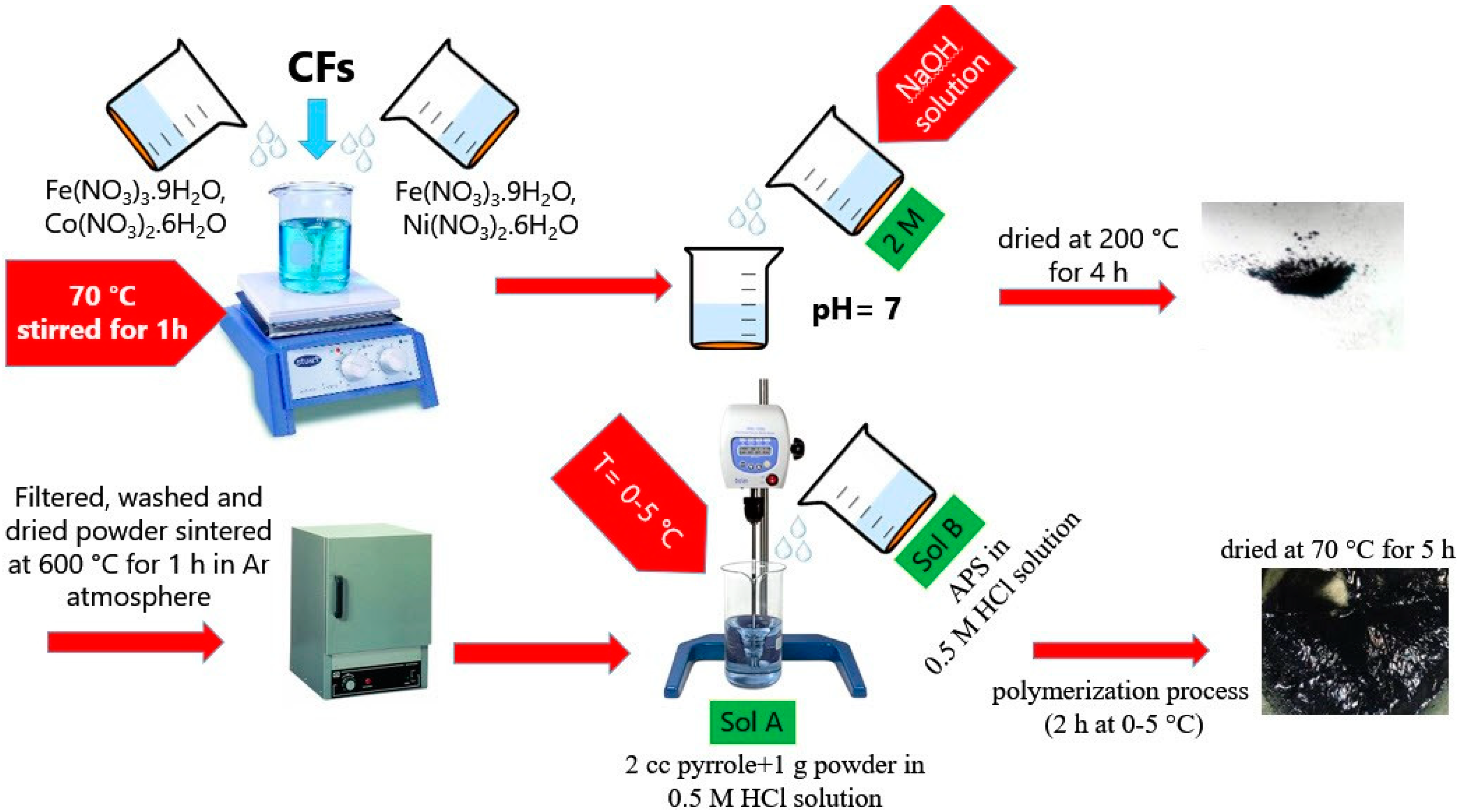
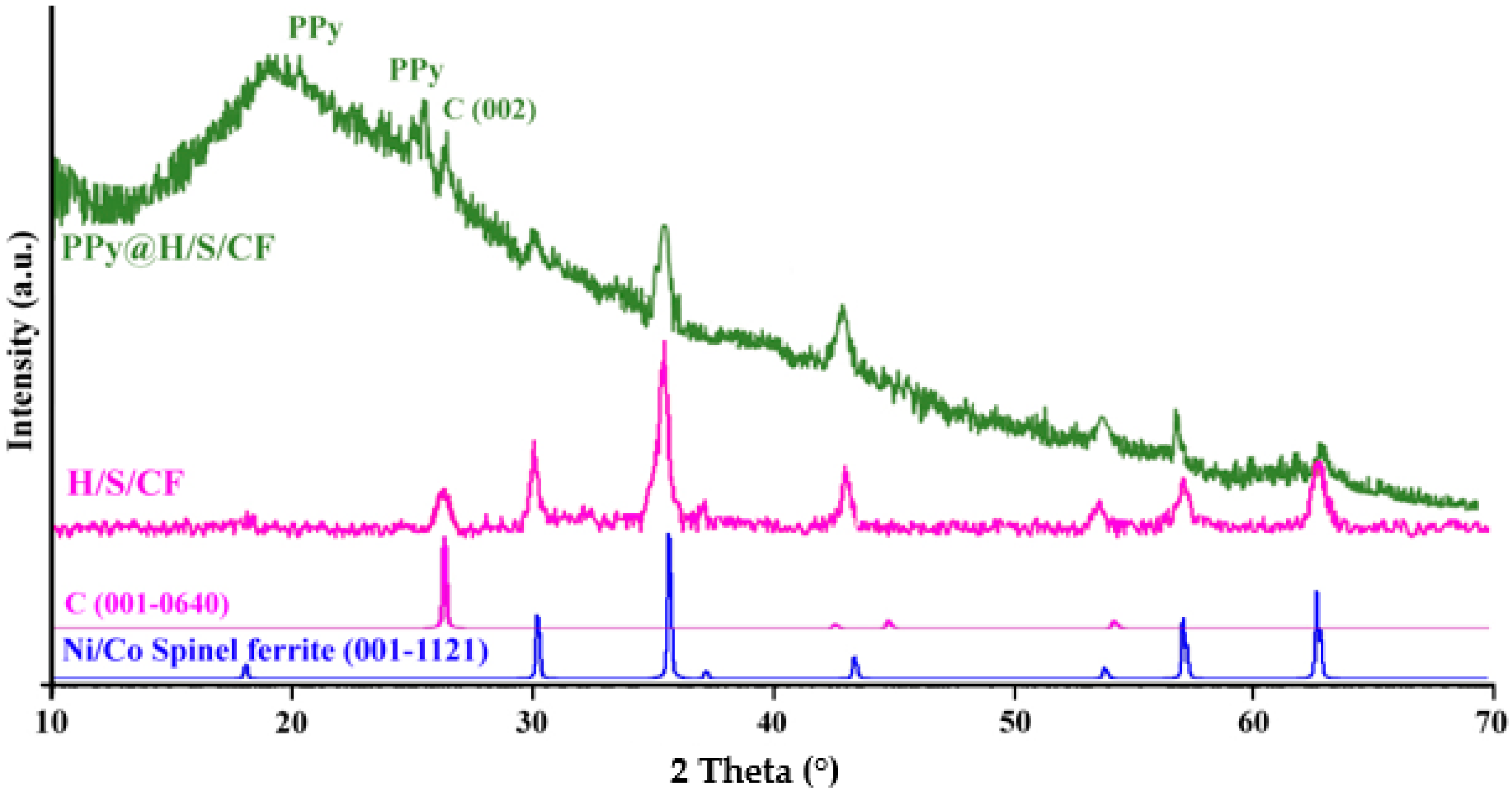
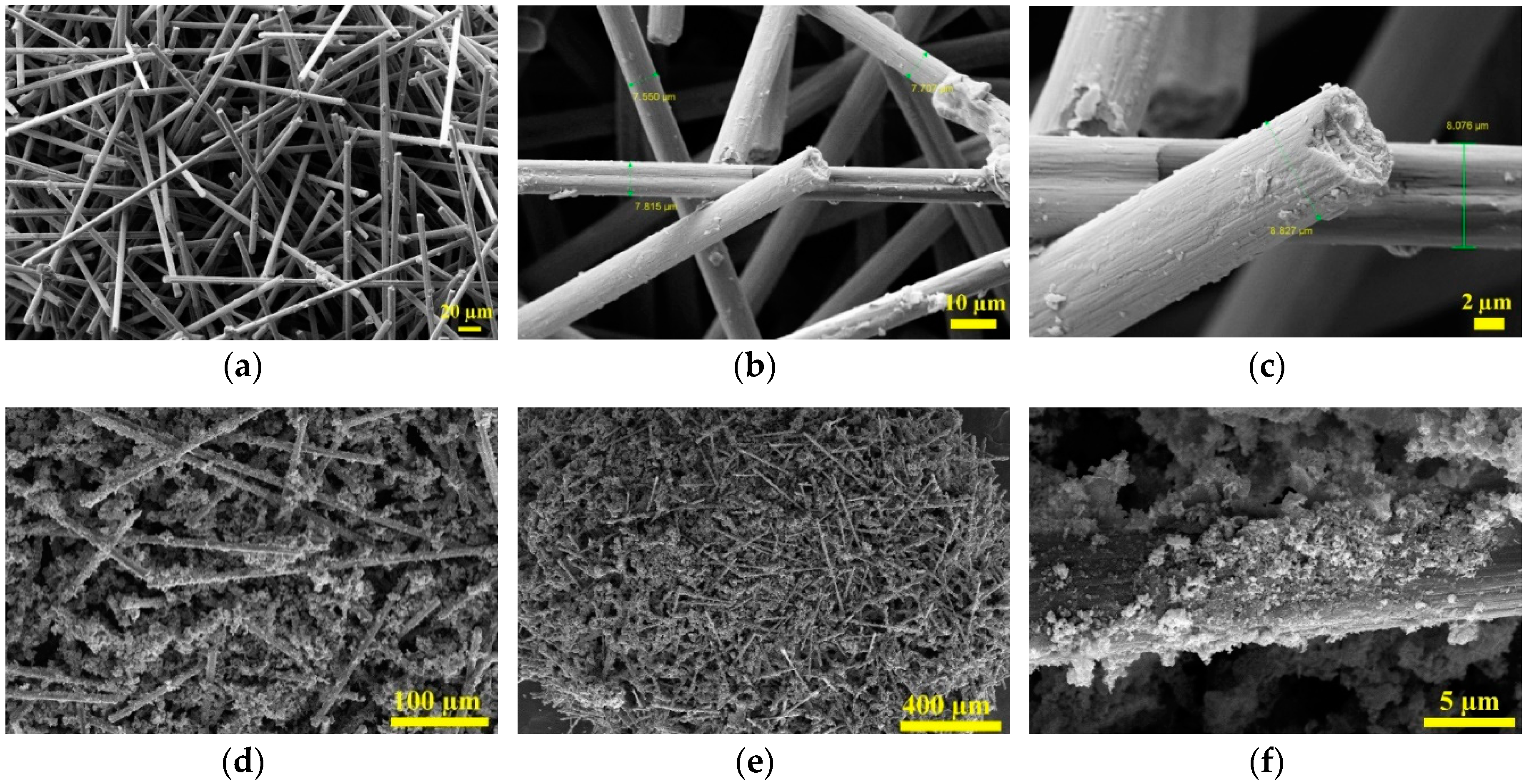

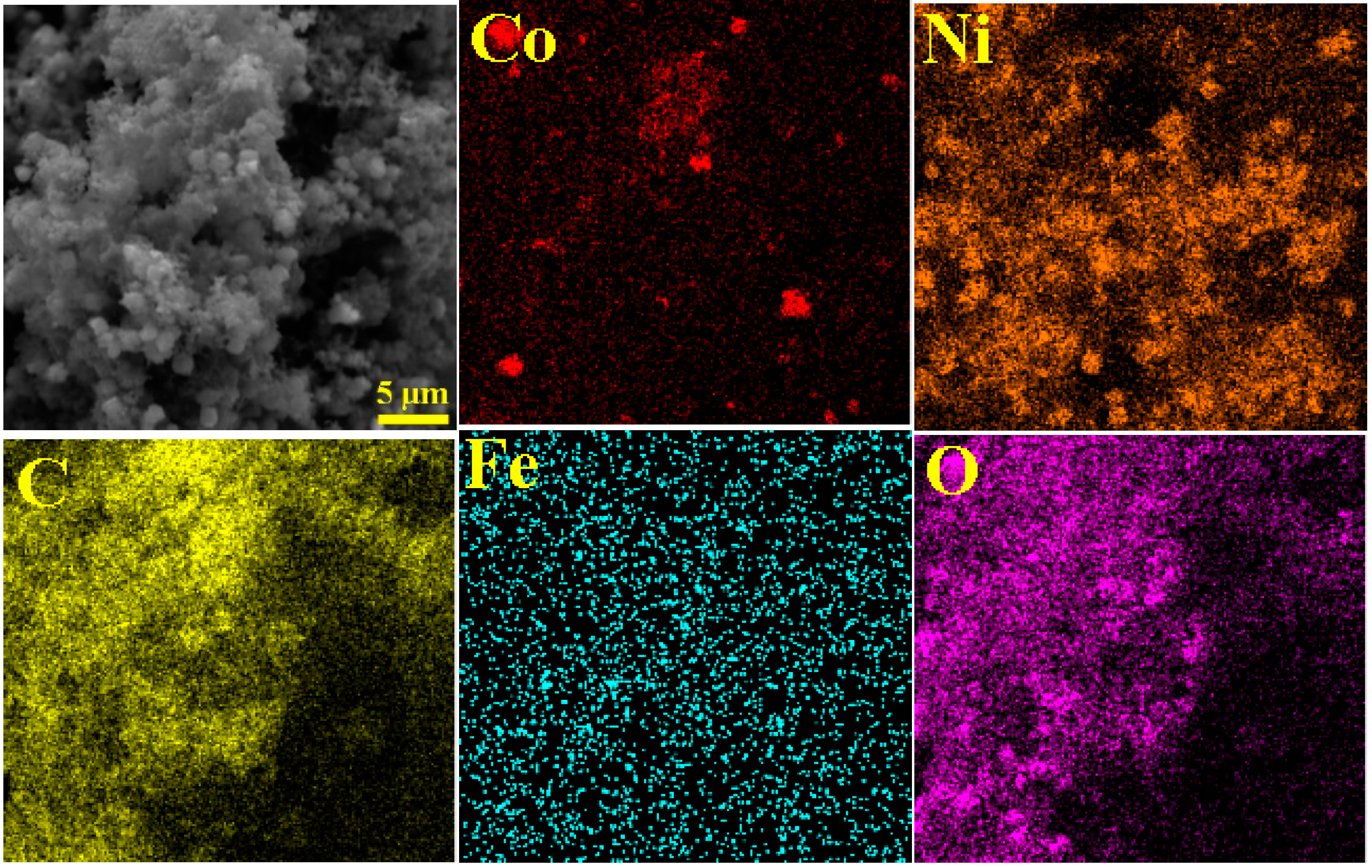
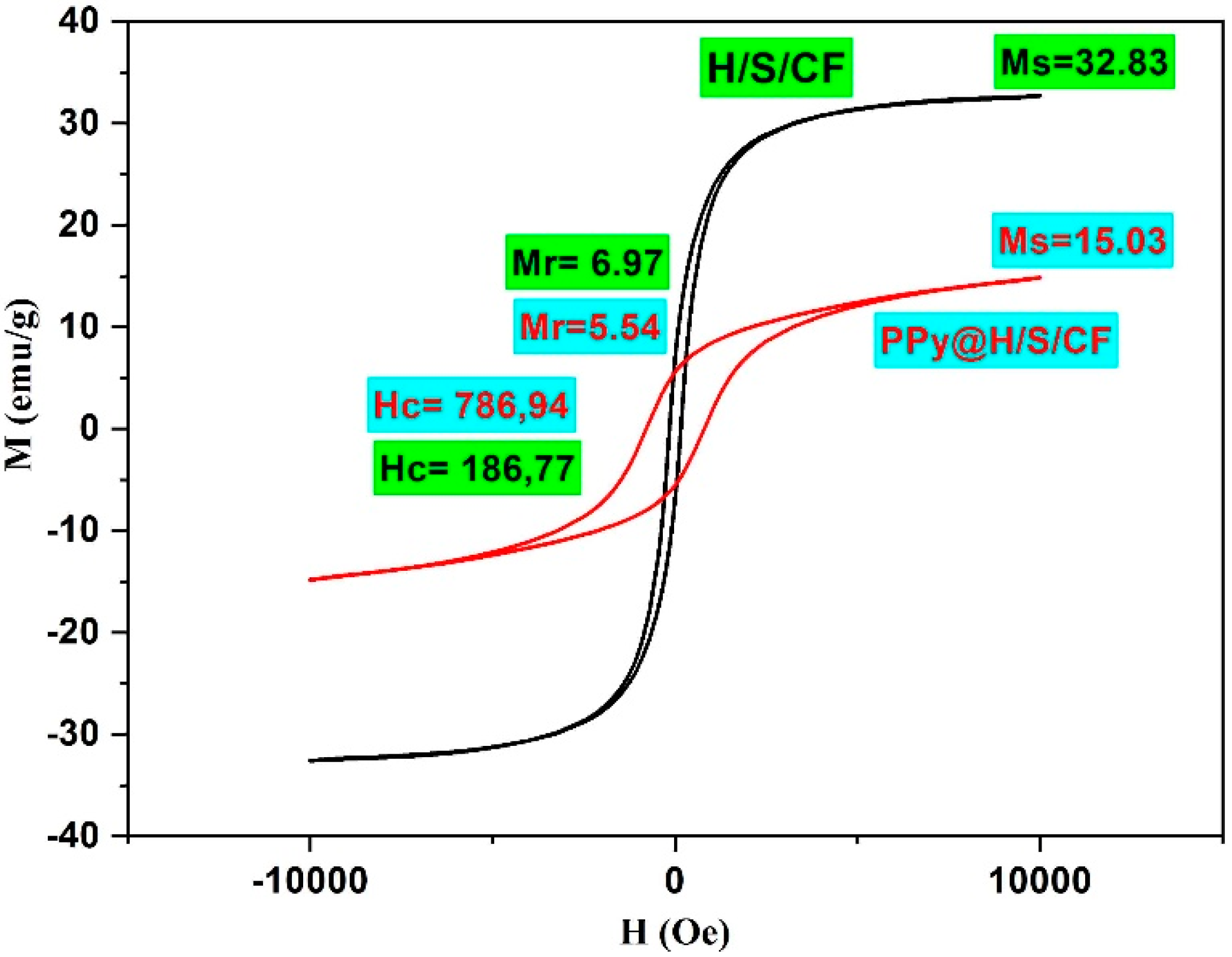
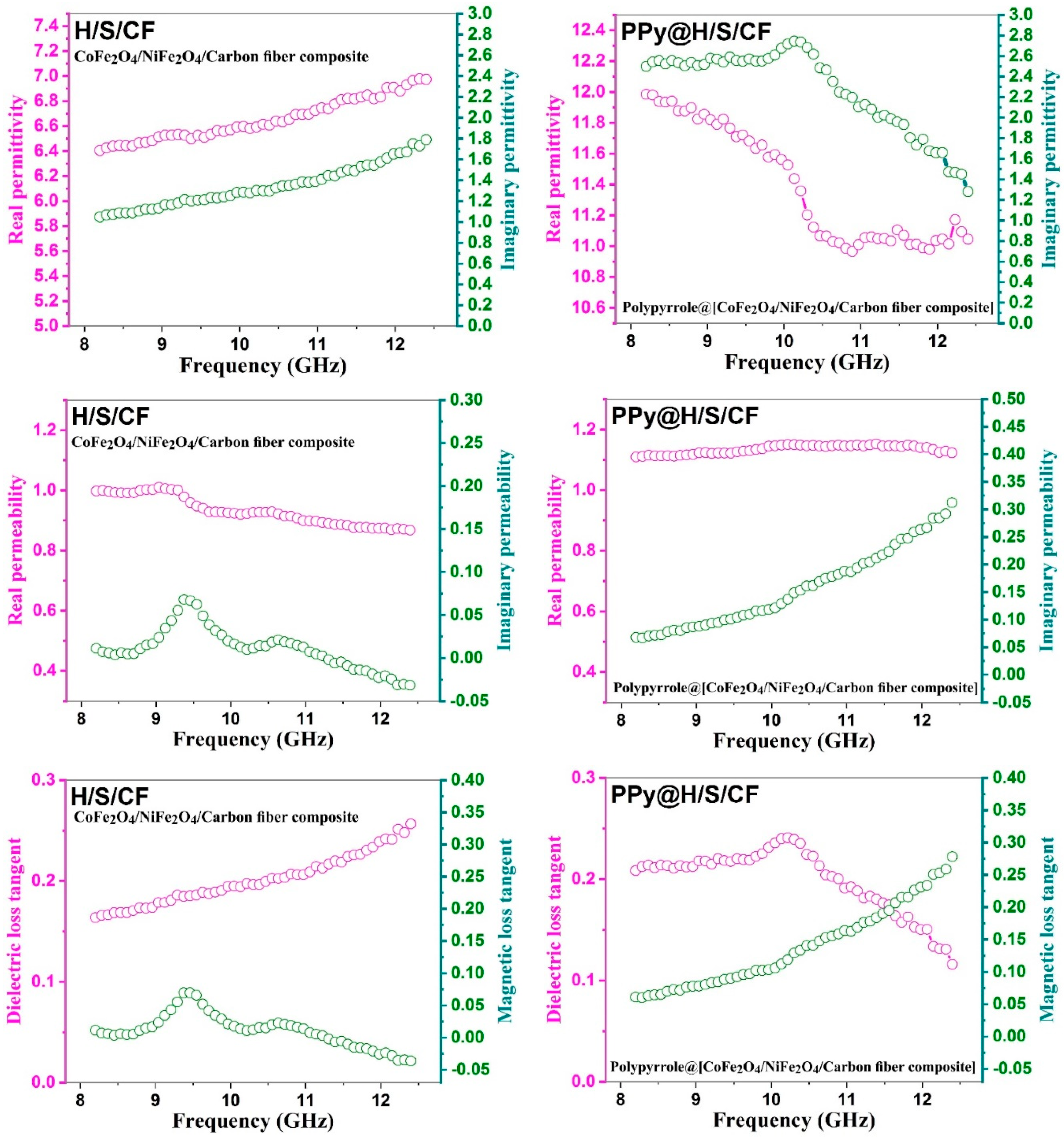
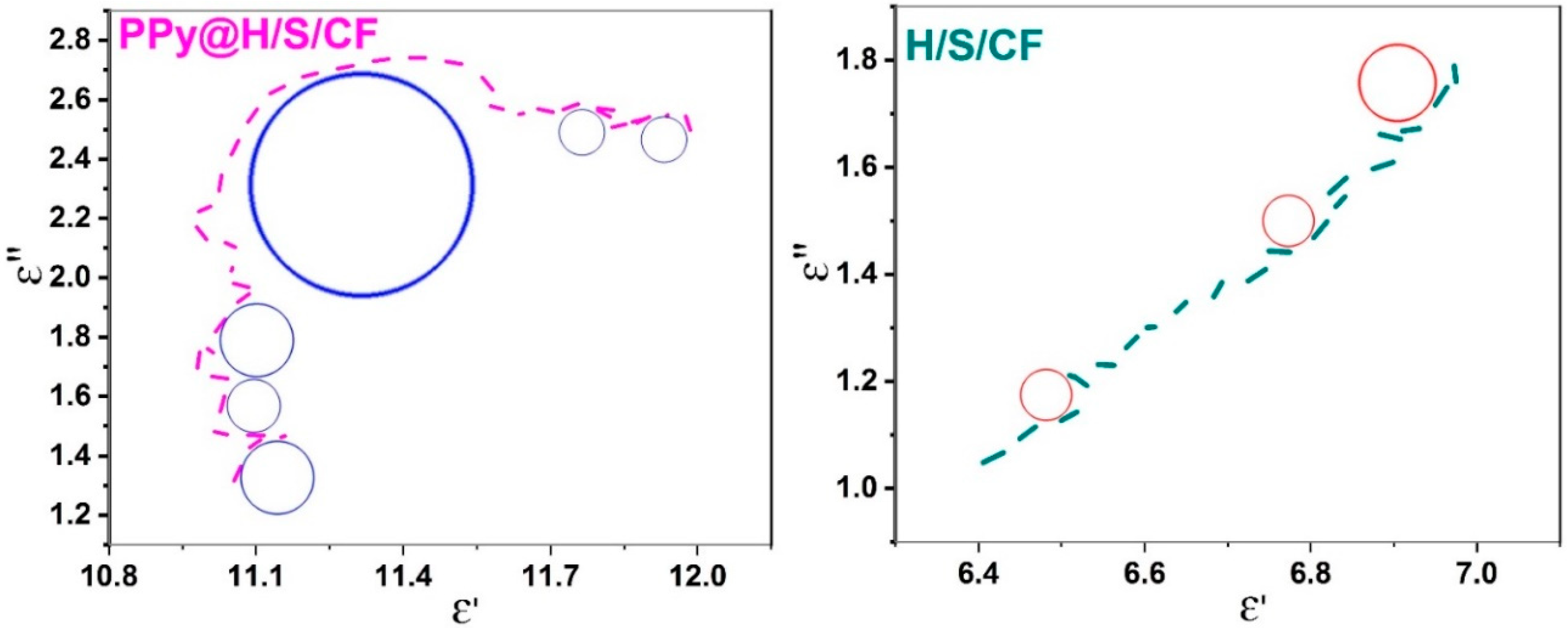
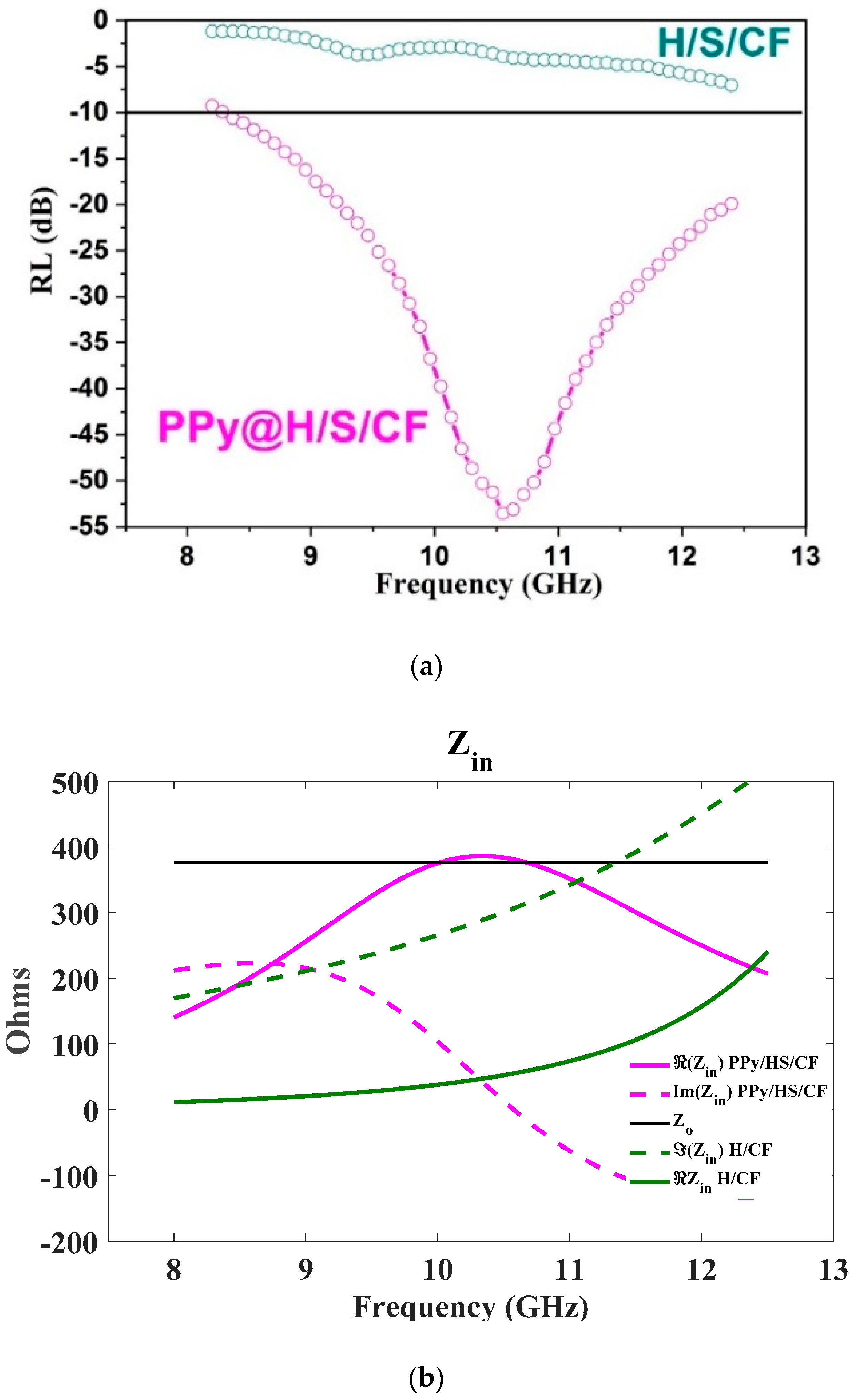
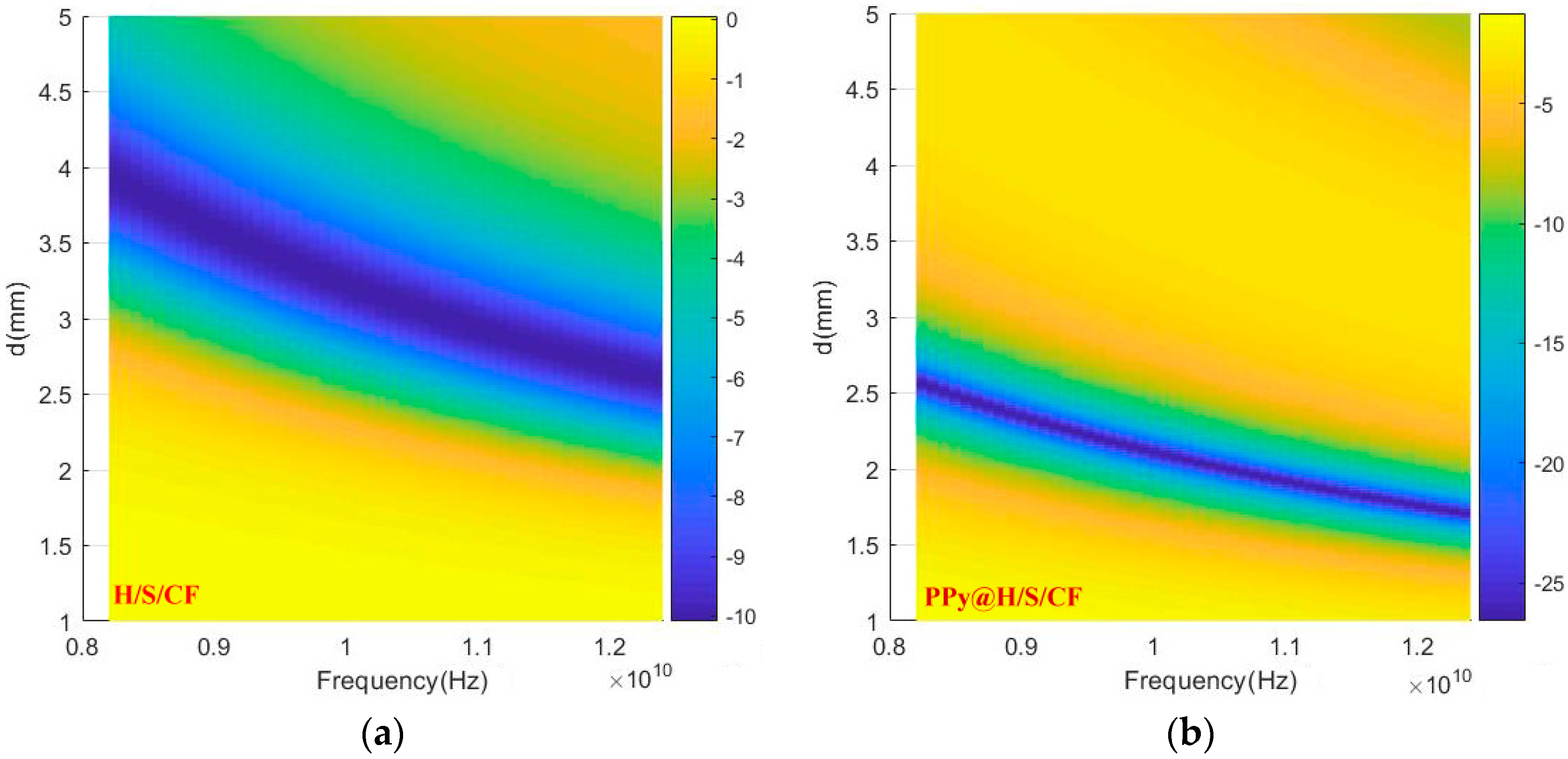
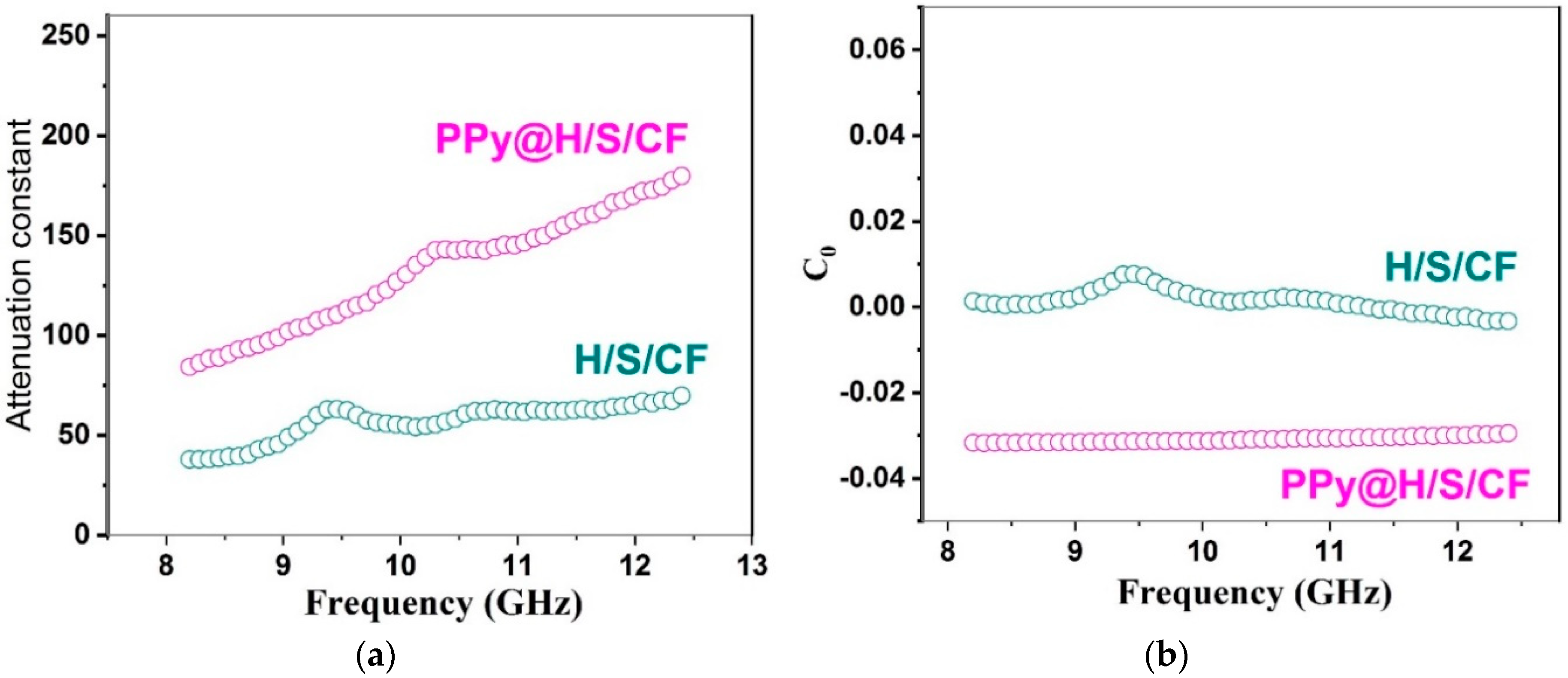
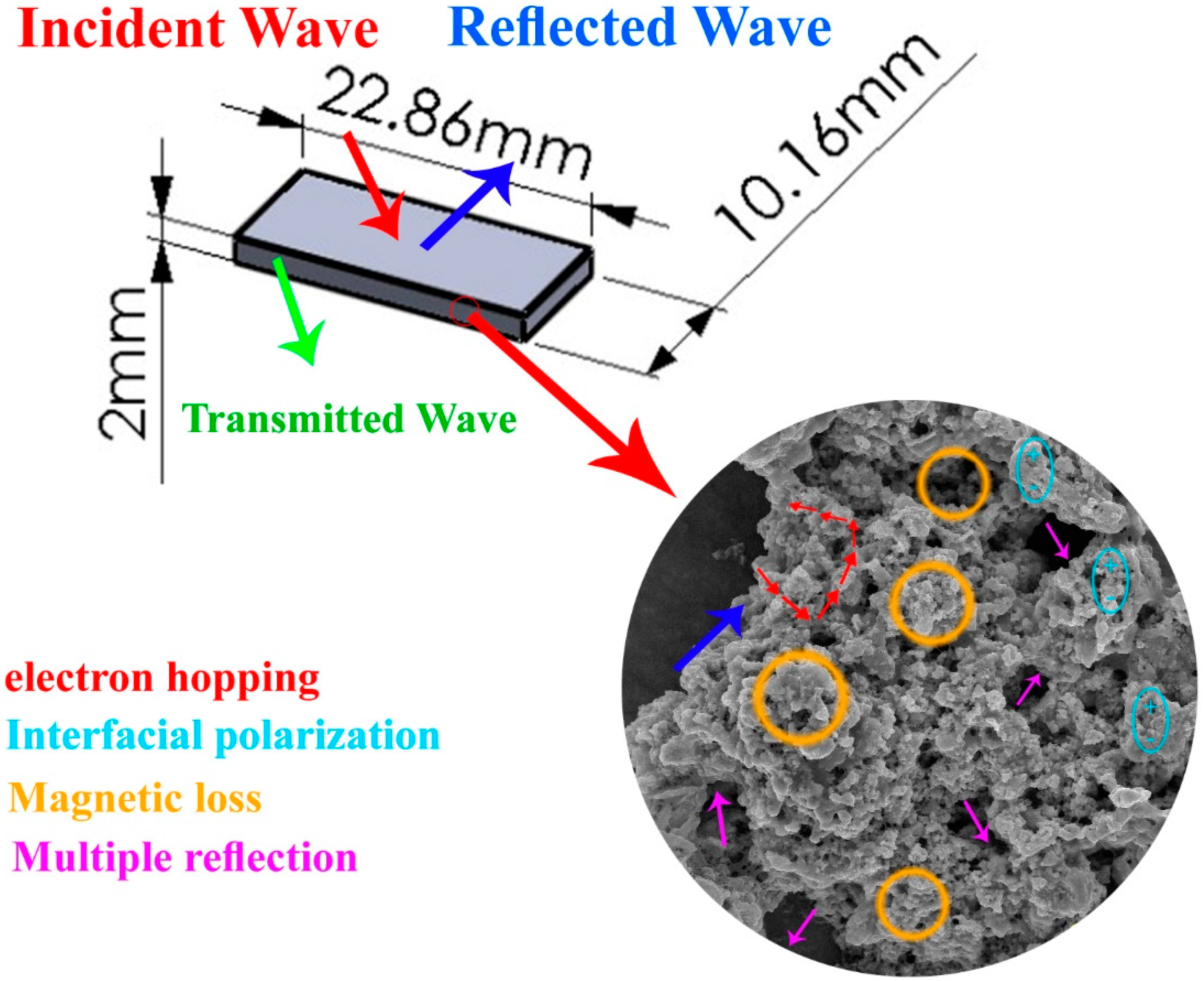
© 2020 by the authors. Licensee MDPI, Basel, Switzerland. This article is an open access article distributed under the terms and conditions of the Creative Commons Attribution (CC BY) license (http://creativecommons.org/licenses/by/4.0/).
Share and Cite
Sadeghi, R.; Sharifi, A.; Orlowska, M.; Huynen, I. Investigation of Microwave Absorption Performance of CoFe2O4/NiFe2O4/Carbon Fiber Composite Coated with Polypyrrole in X-Band Frequency. Micromachines 2020, 11, 809. https://doi.org/10.3390/mi11090809
Sadeghi R, Sharifi A, Orlowska M, Huynen I. Investigation of Microwave Absorption Performance of CoFe2O4/NiFe2O4/Carbon Fiber Composite Coated with Polypyrrole in X-Band Frequency. Micromachines. 2020; 11(9):809. https://doi.org/10.3390/mi11090809
Chicago/Turabian StyleSadeghi, Rozhin, Abbas Sharifi, Marta Orlowska, and Isabelle Huynen. 2020. "Investigation of Microwave Absorption Performance of CoFe2O4/NiFe2O4/Carbon Fiber Composite Coated with Polypyrrole in X-Band Frequency" Micromachines 11, no. 9: 809. https://doi.org/10.3390/mi11090809
APA StyleSadeghi, R., Sharifi, A., Orlowska, M., & Huynen, I. (2020). Investigation of Microwave Absorption Performance of CoFe2O4/NiFe2O4/Carbon Fiber Composite Coated with Polypyrrole in X-Band Frequency. Micromachines, 11(9), 809. https://doi.org/10.3390/mi11090809




